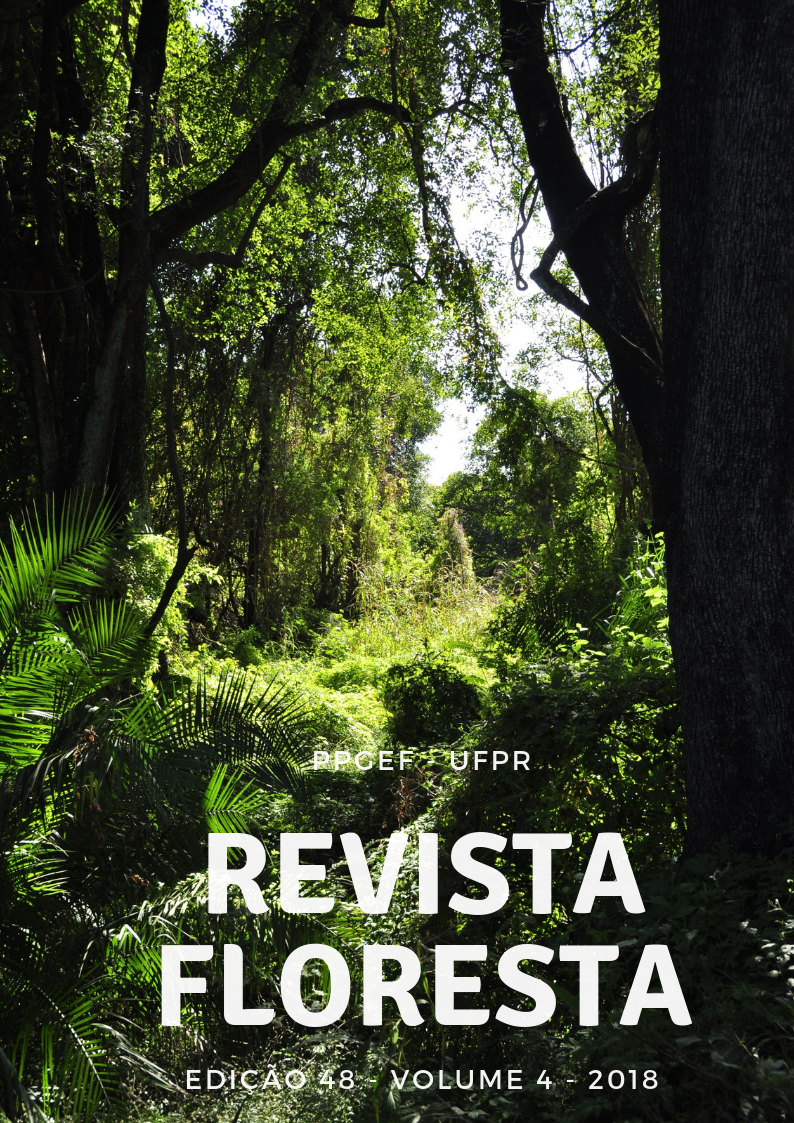USE OF MINI POLYTUNNELS FOR THE MAINTENANCE OF A CLONE GARDEN OF ACACIA MEARNSII DE WILDEMAN IN DIFFERENT SEASONS OF THE YEAR
DOI:
https://doi.org/10.5380/rf.v48i4.57602Palavras-chave:
Environmental conditions, cutting, rootingResumo
The aim of this study was to verify the influence of mini polytunnels on the quality of shoots produced in a black wattle clone garden. The treatments used were: T1 – clone garden with mini polytunnels inside the greenhouse; T2 – clone garden with no mini polytunnels inside the greenhouse; T3 – clone garden with mini polytunnels outside the greenhouse; and T4 – clone garden with no mini polytunnels outside the
greenhouse. These four treatments formed a 4 x 3 factorial along with three seasons of the year: winter/2015, summer/2015-2016, and autumn/2016. A randomized block design was used with six blocks and ten cuttings per plot. Survival rate, number of shoots per cutting, and mean shoot length were evaluated. Shoots were collected from the cuttings and a rooting experiment with the same design was installed. Rooting rate, rate of shoots with calluses, number of roots per shoot, and mean shoot length per cutting were evaluated. There was interaction between the environment in the clone garden and the season of the year. In the winter, the treatment with mini polytunnels outside the greenhouse (T3) showed the best results, mainly in what concerns to the rooting of shoots. Shoots survived in the four clone garden environments, and the lowest survival rates were observed in the autumn/2016 season. The best responses were observed in the summer season.
Downloads
Publicado
Como Citar
Edição
Seção
Licença
Direitos Autorais para artigos publicados nesta revista são do autor, com direitos de primeira publicação para a revista. Em virtude da aparecerem nesta revista de acesso público, os artigos são de uso gratuito, com atribuições próprias, em aplicações educacionais e não-comerciais.A revista, seguindo a recomendações do movimento Acesso Aberto, proporciona acesso publico a todo o seu conteudo, seguindo o principio de que tornar gratuito o acesso a pesquisas gera um maior intrcambio global de conhecimento.
Conteúdos do periódico licenciados sob uma CC BY-NC-SA 4.0



